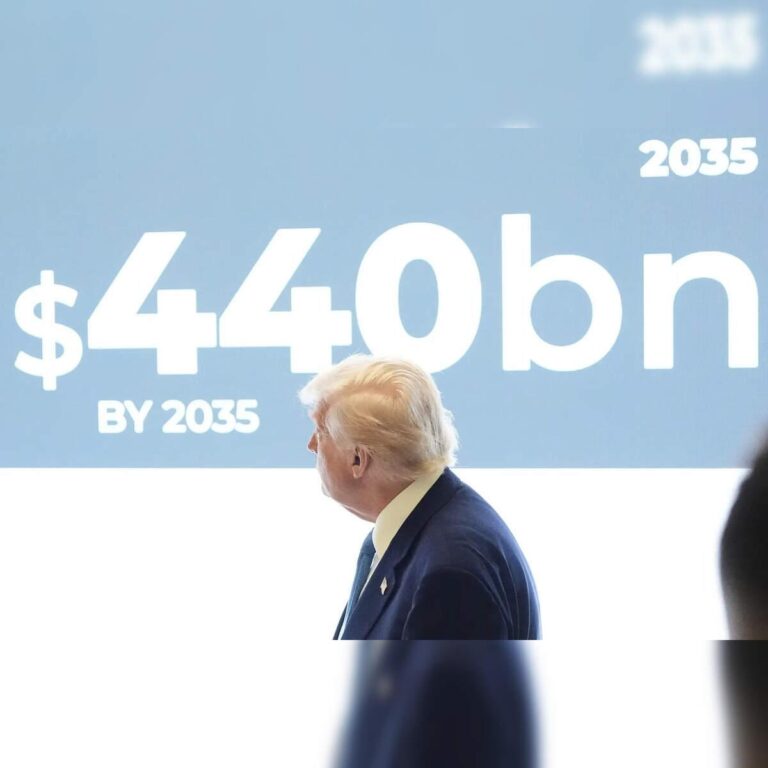Decoding the Gulf’s Multi-Trillion Dollar Investment Pledges: What They Mean for the U.S. Economy
Understanding the Scale and Significance of Gulf Capital Inflows
Recently, former President Donald Trump highlighted the substantial economic opportunities tied to the Gulf Cooperation Council (GCC) countries’ promises to invest trillions of dollars into the United States. These commitments represent a significant influx of foreign capital that could reshape the American economic landscape. This article explores the origins, magnitude, and practical implications of these investment pledges, incorporating expert insights and the latest data to assess how Gulf funding might influence key industries and bilateral economic relations.
Industries Targeted for Growth Through Gulf Funding
The Gulf nations have outlined ambitious plans to deploy large-scale investments across several pivotal U.S. sectors, emphasizing areas that support both robust economic expansion and environmental sustainability. The primary focus areas include:
- Renewable and Clean Energy Initiatives: Investments aimed at scaling solar, wind, and other sustainable energy technologies to lower carbon emissions and foster green employment opportunities.
- High-Tech Manufacturing and Innovation: Establishing cutting-edge hubs centered on artificial intelligence, cybersecurity, and advanced data infrastructure development.
- Modernizing Infrastructure: Revamping transportation networks, logistics frameworks, and utility systems to boost operational efficiency and resilience.
- Urban Development and Housing: Projects focused on revitalizing city centers and expanding affordable housing to meet rising urban demands.
Current projections estimate that these sectors could attract upwards of $2 trillion in Gulf investments, potentially triggering widespread economic growth and job creation.
| Sector | Estimated Investment (Billion $) | Projected Impact |
|---|---|---|
| Renewable Energy | 600 | Expansion of green jobs, significant carbon emission reductions |
| Technology & Innovation | 800 | Breakthroughs in AI, cybersecurity, and data infrastructure |
| Infrastructure | 450 | Improved transportation, logistics, and utility efficiency |
| Real Estate | 150 | Urban renewal and increased affordable housing availability |
Detailed Sectoral Advantages and Wider Economic Effects
The anticipated Gulf capital inflow is expected to generate immediate employment opportunities while strengthening the U.S. economy’s long-term durability. Investments in energy and infrastructure are particularly vital for advancing America’s transition to sustainable energy sources and upgrading critical public utilities. Concurrently, the technology and manufacturing sectors stand to benefit from enhanced innovation ecosystems, which could reduce dependency on foreign imports and elevate the U.S.’s position in the global market.
Moreover, the healthcare and real estate industries are set to gain from increased funding. Enhanced investment in healthcare technology and services promises to improve nationwide access and quality of care. At the same time, real estate development initiatives are likely to stimulate urban growth and alleviate housing affordability issues, contributing to economic revitalization and boosting local tax revenues.
| Sector | Investment Priorities | Expected Outcomes |
|---|---|---|
| Energy & Infrastructure | Renewable projects, grid modernization | Job creation, environmental benefits |
| Technology & Manufacturing | Innovation centers, production expansion | Enhanced competitiveness, reduced import reliance |
| Healthcare | Medical technology and service expansion | Better healthcare access, economic growth |
| Real Estate | Urban revitalization, affordable housing | Economic renewal, increased tax base |
Challenges and Criticisms Surrounding Gulf Investment Promises
Despite the optimistic outlook, doubts remain about the feasibility of these Gulf investment commitments. Skeptics point to the lack of legally binding agreements and a historical trend of delayed or downsized investments from Gulf countries, often influenced by geopolitical tensions and fluctuating oil revenues. Transparency issues further complicate the credibility of the announced figures.
Additional hurdles include:
- Volatility in global oil markets affecting Gulf states’ investment capabilities
- Political instability in the Middle East potentially interrupting capital flows
- Concerns within the U.S. about foreign control over critical sectors like infrastructure and technology
| Issue | Potential Impact |
|---|---|
| Investment Commitment Reliability | Possible funding delays or reductions |
| Geopolitical Instability | Disruptions in sustained cooperation |
| Economic Vulnerability | Exposure to external political and economic shocks |
Maximizing Gains: Strategic Measures for Effective Gulf Investment Utilization
To fully capitalize on Gulf capital, U.S. decision-makers and business leaders must implement focused strategies that encourage sustainable and inclusive economic growth. Prioritizing infrastructure projects‚ÄĒsuch as transportation upgrades and energy system enhancements‚ÄĒcan create immediate jobs while strengthening economic stability. Promoting partnerships in technology and innovation will help preserve America‚Äôs competitive edge globally.
Facilitating transparent and streamlined regulatory frameworks is essential to attract and maintain Gulf investments. Additionally, expanding investment targets beyond traditional energy sectors into fields like healthcare technology, biotechnology, and advanced manufacturing can diversify economic benefits.
Fostering cultural and commercial exchange initiatives will also build mutual trust and understanding, establishing a foundation for long-lasting collaborations that transcend mere financial transactions.
| Sector | Economic Contribution | Suggested Approach |
|---|---|---|
| Infrastructure | Employment growth, improved logistics | Public-private partnerships and joint ventures |
| Technology | Accelerated innovation, global leadership | Incentives for R&D and collaborative projects |
| Renewable Energy | Environmental sustainability, energy security | Co-investment funds and aligned policy frameworks |
Final Thoughts: Balancing Opportunities and Risks in Gulf-U.S. Economic Engagement
As the United States navigates ongoing economic challenges, the prospect of massive Gulf investments presents both promising opportunities and complex risks. While the scale of the ‚Äútrillions‚ÄĚ referenced by former President Trump highlights potential pathways for growth and strengthened diplomatic ties, realizing these advantages depends on securing concrete agreements, maintaining geopolitical stability, and crafting effective policy measures. The evolving economic partnership between the U.S. and Gulf nations will be a critical dynamic to monitor, with the capacity to significantly influence America‚Äôs economic future in the coming decade.




